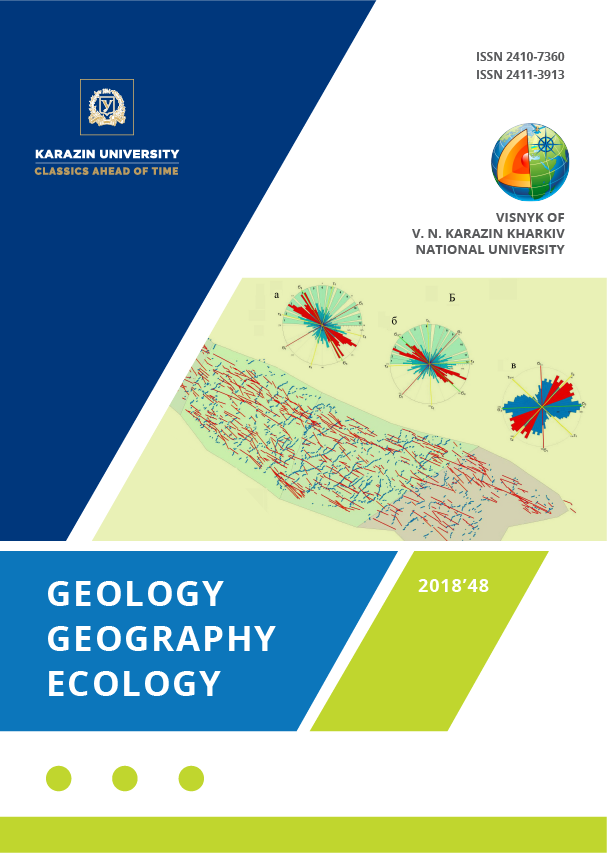Динаміка чисельності населення глобальних міст Східно-Європейського регіону
Анотація
В статті здійснено аналіз показників динаміки чисельності населення глобальних міст Східно-Європейського регіону та їх частки в населенні відповідних країн за період 2000-2018 роки. Обгрунтовано важливість проведення досліджень демографічних особливостей розвитку глобальних міст, зокрема в регіональному розрізі, адже глобальні міста є наразі провідними центрами економічного, фінансового, політичного, культурного, соціального, культурного розвитку.
Виявлені особливості та основні тенденції динаміки чисельності населення та частки населення в відповідних країнах досліджуваних глобальних міст Східно-Європейського регіону за період 2000-2018 роки. Здійснено групування глобальних міст регіону за період дослідження за показниками динаміки чисельності населення з 2000 по 2018 роки, частки населення досліджуваних міст в населенні відповідних країн. Проведено кластерний аналіз глобальних міст регіону за вище перечисленими показниками, за результатом якого виділено групи міст для яких зі збереженням існуючих темпів демографічного розвитку характерним буде: збереження статусу глобальних – Москва, Санкт-Петербург, Київ; втрата статусу глобальних міст – Будапешт, Прага, Софія, Вроцлава; міста для яких необхідно впровадження заходів для збереження статусу глобальних – Мінськ, Бухарест, Варшава.
Завантаження
Посилання
Glasychev, B. (2008). Urbanism. Moscow, Russia: Europe, 220.
Matveeva, O. Ju. (2015). Global cities – cities that change the socio-cultural space. Bulletin of Science in Siberia, 1(16), 93‒97.
Sassen, S. (1991). Global city: New York, London, Tokyo] Princeton University Press, 410.
Sluka, N. A. (2009). Geodemograficheskiye fenomeny globalnykh gorodov [Geodemographic phenomena of global cities. Smolensk, Russia: Oecumene 317.
Sluka, N. A. (2005). Evolution of the Concept of World Cities. Regional Studies, 1, 11‒29.
Spengler, O. (1998). The Decline of Europe. Essays on the morphology of world history. Vol.2. World-historical perspectives. In I. I. Makhankova (Eds.). Moscow, Russia: Mysl, 606.
Voronin, I. M. (2009). Formation of global cities as a result of globalization and informatization processes impact on the resettlement system. Scientific Notes of Taurida National V.I.Vernadsky University. Series: geography, 2/22(61), 167‒172. Available at: http://sngeography.crimea.edu/arhiv/2009/uch_22_2g/020_voron.pdf
The Main Department of Statistics in Kyiv. Available at: http://www.kiev.ukrstat.gov.ua/
State Statistics Service of Ukraine. Available at: http://www.ukrstat.gov.ua/
National Statistics Committee of the Republic of Belarus (Belstat). Available at: http://www.belstat.gov.by/
National Bureau of Statistics of the Republic of Moldova. Available at: http://www.statistica.md/index.php?l=ru
United Nations official website. Available at: http://www.un.org/ru/index.html
Federal State Statistics Service. Available at: http://www.gks.ru/
Sassen, S. (2005). The Global City: Introducing a Concept. The Brown Journal of World Affairs, Winter / Spring, 9(2), 27‒43.
Taylor, P. The New Geography of Global Civil Society: NGOs in the World City Network. GaWC Research Bulletin, 144.
Taylor, P. (2004). World City Network: A Global Urban Analysis. Routledge, 256
Czech Statistical Office. Available at: https://www.czso.cz/csu/czso/home
Eurostat. Available at: http://ec.europa.eu/eurostat
Globalization and World Cities. Available at: http://www.lboro.ac.uk/gawc/couro1.html
Główny Urząd Statystyczny. Available at: https://bdl.stat.gov.pl/BDL/start
Hungarian Central Statistical Officem. Available at: http://www.ksh.hu/
National Statistical Institute of Bulgaria. Available at: http://www.nsi.bg/en
National Statistical Institute of Romania. Available at: http://www.insse.ro/cms/en
Statistical Office of the Republic of Slovenia. Available at: http://www.stat.si/StatWeb/en/home
The World According to GaWC. Available at: http://www.lboro.ac.uk/gawc/gawcworlds.html





